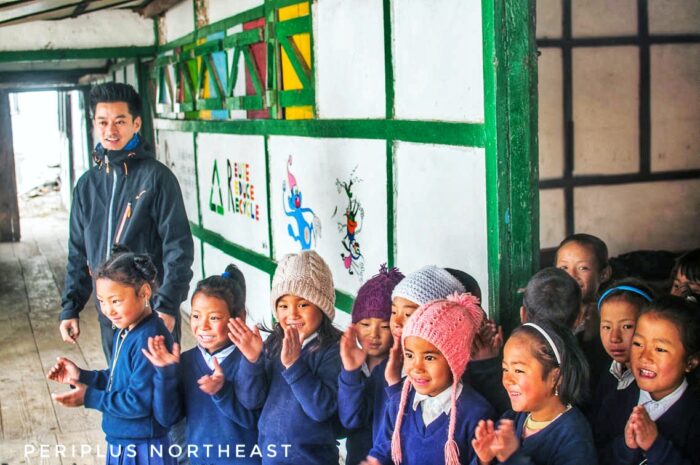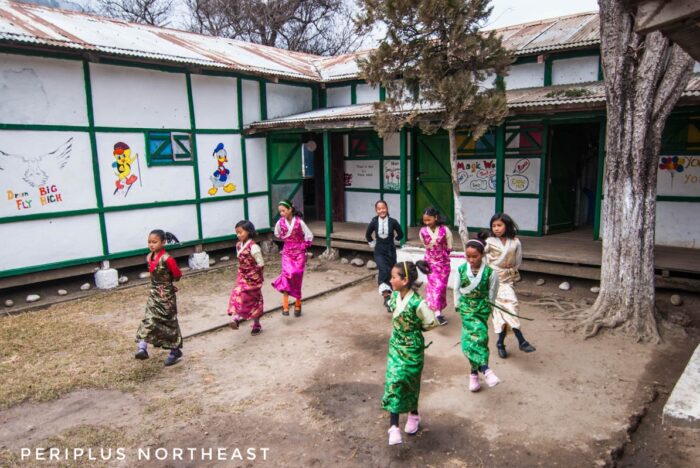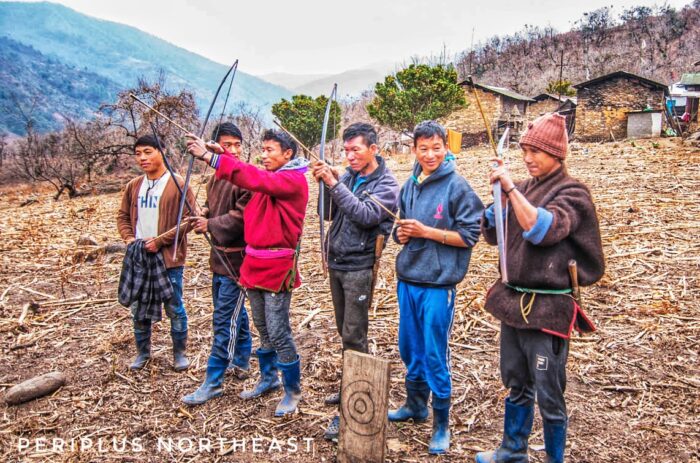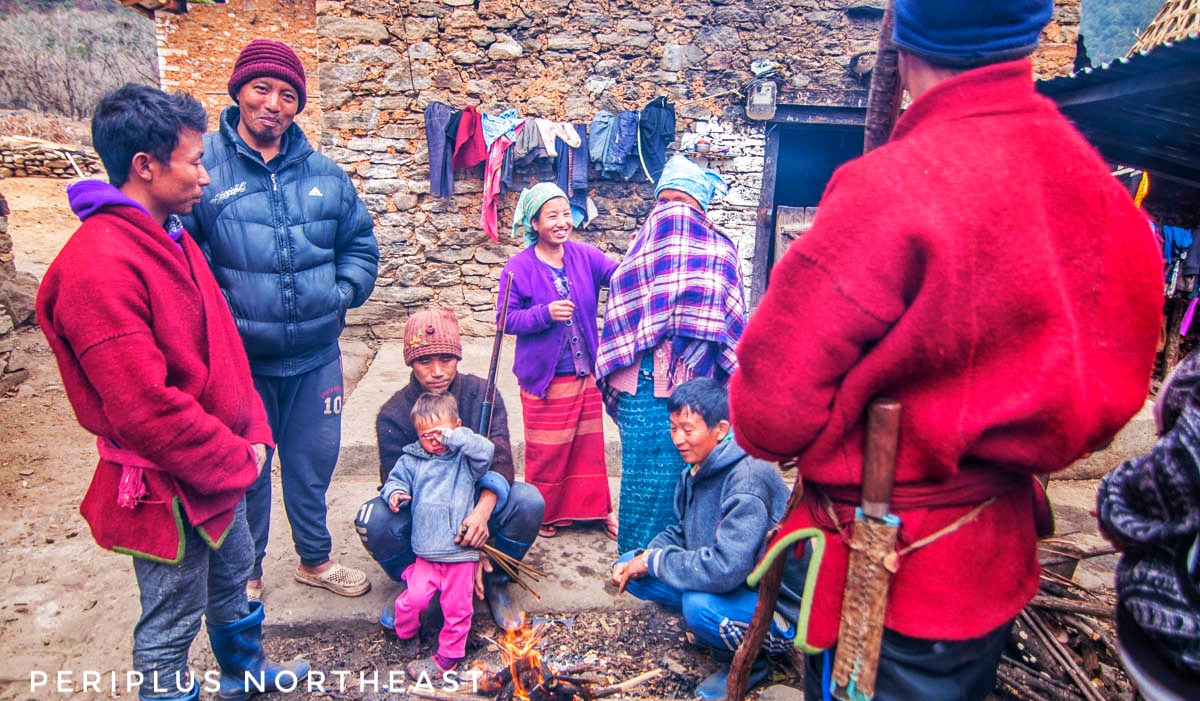
Is sustainable tourism a mere fancy buzzword to cover up for millennial guilt? How often people actually do something meaningful and “give back to society”? Is sustainable tourism in Northeast India any different from other places?
These are no easy questions to answer and it is hard to speak for everyone. I have not done much myself. My work may have indirectly benefitted some local entrepreneurs over the years (some homestay owners in Himachal come to mind), but I have never directly taken up any social cause. So, today I want to discuss a few things about the nature of sustainable tourism in Northeast India and various possibilities.
But before that, let me share with you a glimpse of a few social initiatives by HolidayScouts that I visited earlier this year. They are into operating tours but also have many initiatives to help the locals around West Kameng and Tawang districts and I experienced a couple of initiatives during a trip last January.
Paint a School at Chug

Is painting a school a big deal? Yes, if it is located in a poor village where the families can barely pay for education. This school located in Chug, a few KMs away from Dirang, was in bad shape. So, the initiative renovated the school, painted the walls with the help of volunteers to make it more cheerful, and gifted basic supplies to the students. When we visited, the place, the students seemed happy and they organized a traditional cultural program too.


Water Supply at Samtu Village
A bit further from Chug was Samtu Village. It is a very small village with traditional wooden homes and almost no modern facilities. It is on the edge of a hilly forest that is reportedly full of wildlife. Water supply used to be a big issue here but now the plan is to connect the houses with running water supply. Apart from that this village could improve its economic condition through tourism. We practiced a bit of archery at the village ground. This activity itself can be promoted.


Apart from these, there are other initiatives that are going on such as education of girl child, and vocational training of local youth, especially in the field of tourism. You can read more about these social initiatives by HolidayScout here. All these activities are at a nascent stage and I am sure there are scores of villages that require assistance. This is why I decided to write about hoping it encourages more people to take up such projects.
So, the purpose of these examples is simply to help people ideate and categorize things. What kind of sustainable initiatives needs to be taken? Ultimately they have to benefit the indigenous population as that is the only way to keep the process going. Some organizations may already be working in this direction and in the near future, I would like to explore such initiatives.
As far as I can see, it is necessary to focus on these three categories,
- Economic Initiatives: I think for an economically challenged region the primary need is to change the mindset. I know people who sell off valuable land and prefer to do some low-level government jobs instead of utilizing ancestral resources. Lack of business acumen and exposure also means that local farmers and artisans do not know how to find a market and how to develop their offerings as per market demand.
- Environmental Initiatives: In this day and age, it goes without saying but the nature of environmental challenges is diverse and they differ from place to place. Poaching and deforestation are common concerns but there are other more complex issues such as human-wildlife conflict, open mining, loss of indigenous crop species, etc. Plain areas suffer from erosion by the rivers while the hills are in two minds because of the big dams.
- Educational Initiatives: Apart from basic education, vocational training is necessary among unemployed youth. Tourism is best suited for it but they can be groomed for other fields too.
Volunteering in Northeast India
To do any of the above, it will require manpower and that is why volunteering in Northeast Indian needs to pick up. I know volunteering is more prevalent in the Northern Himalayas. It is comparatively less prevalent in NE but there needs to be a more systematic approach to it.
I just wrote these words quickly but I will keep exploring this topic and update it in the near future.

